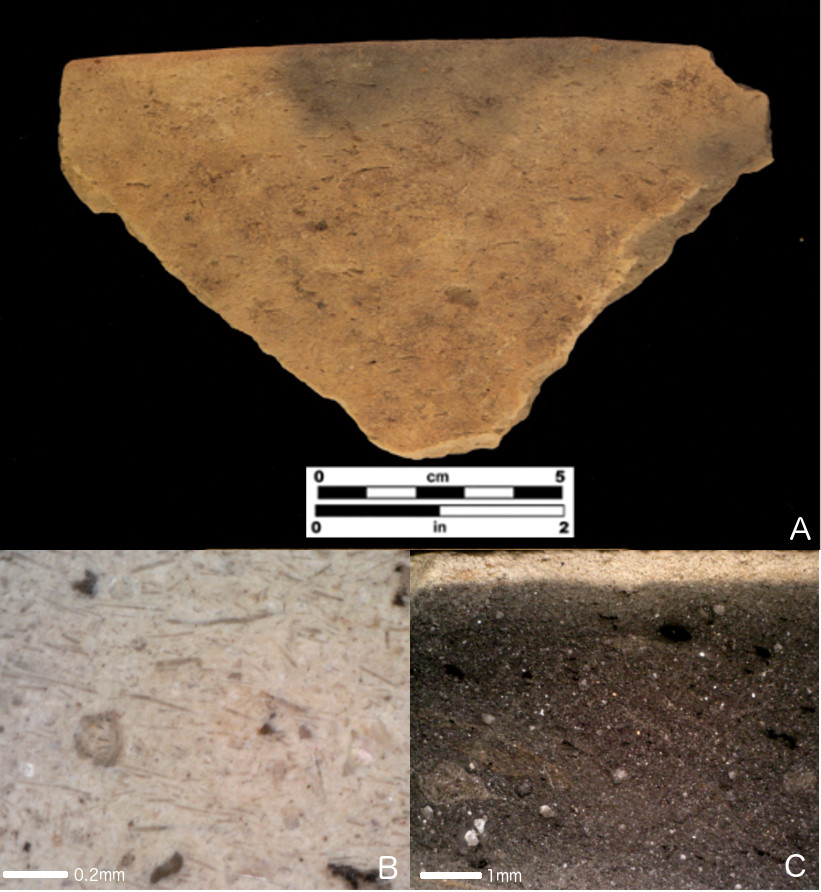
A new study out of the Ceramic Tech Lab demonstrates that the soft “chalky” pottery known as St. Johns ware was produced much more broadly than in the St. Johns culture area of Northeast Florida. This pottery is known for having abundant microscopic freshwater sponge spicules in the paste. Bloch and her colleagues show that the elemental and mineralogical fingerprints of the clay used to produce this ware are consistent with localized production across peninsular Florida. Furthermore, the material used was most likely wetland muck. Read the open-access article here.
Bloch, Lindsay, Neill J. Wallis, George Kamenov, and John M. Jaeger
2019 Production Origins and Matrix Constituents of Spiculate Pottery in Florida, USA: Defining Ubiquitous St. Johns Ware by LA-ICP-MS and XRD. Journal of Archaeological Science: Reports 24: 313-323. DOI: 10.1016/j.jasrep.2019.01.012